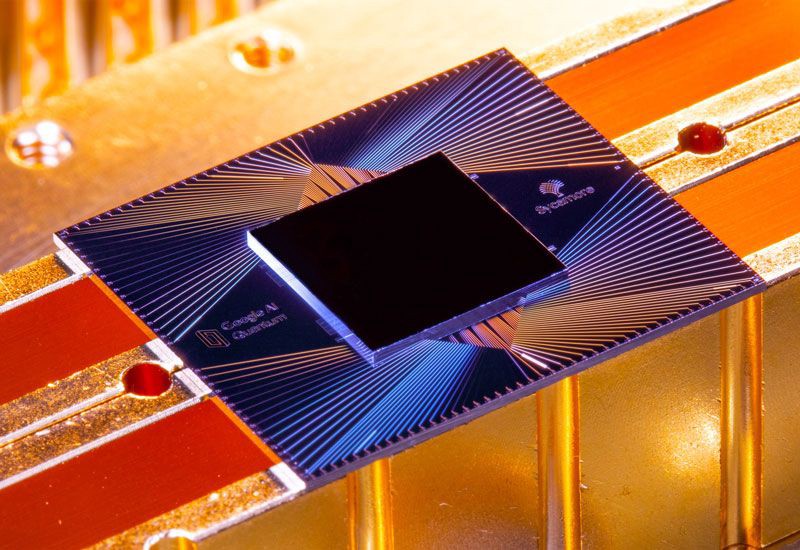Google’s claims of quantum supremacy: Groundbreaking, Overhyped, or Both?
A Q&A with Lee Bassett with insights into this feat of engineering and what the future might hold for this fast-paced field of research.

By Erica K. Brockmeier
In late October, Google made the cover of Nature with its landmark claim of “quantum supremacy,” the ability to solve problems that classical computers would need tens of thousands of years to complete. Publishing several weeks after a leaked version of the paper found its way online, the research has made headlines around the world.
Google’s feat of engineering, creating the first fully programmable quantum computer, has been met with both enthusiasm and skepticism. In fact, an Oct 21st pre-print by researchers at IBM claims that the computation Google said would require 10,000 years to complete could be done in only two-and-a-half days using a different approach.
In this Q&A, Lee Bassett, a scientist who works on quantum computing platforms, explains the science behind the headlines, what IBM’s counterargument means, and what the future holds for this fast-growing, and incredibly hyped, field of research.
Q: What is a quantum computer doing differently than a classical computer?
A quantum computer is a machine that relies on the laws of quantum physics. Those laws say that the state of the machine is described by probability amplitudes, instead of probabilities, where the amplitudes can be negative or even imaginary numbers. Google built a machine that controls these probability amplitudes. At the end of a calculation, you measure the state of the computer, and that’s where the probability amplitude turns into a probability of a certain measurement outcome: Is the bit zero or is it one?
Q: What about this process is so difficult for a classical computer?
The essential part of quantum computation, and also quantum communication and quantum sensing, is that these probability amplitudes are preserved. They can interfere with each other during the calculation such that a negative amplitude cancels a positive one and the output probability is truly zero, whereas with regular probabilities that could never happen. To simulate it classically, you need to hold in memory all of the possibilities that the computer could take. If we wanted to classically encode this data in a regular computer, it requires a lot of memory to store all those intermediate possibilities.
Because Google’s quantum computer has 54 qubits, simulating that experiment with a regular computer requires storing 254 bits of information for every step of the calculation. It’s more than any sort of RAM anywhere.
Q: What does Google’s setup look like?
The core of the quantum computer is a silicon chip, about a square centimeter in size, and on top they fabricated aluminum shapes. The aluminum becomes superconducting at cold temperatures, so charges can move around without dissipating heat. The shapes are assembled into a structure of inductors and capacitors, and each qubit features a small aluminum island and a tunnel barrier for superconducting charges.
The quantum computer chip is in the bottom of a dilution refrigerator connected to a bunch of wires. The can around the refrigerator is full of liquid helium, at 4 Kelvin, and then the insert that goes inside has a coil that condenses a fluid and then evaporates the fluid, essentially the way an air conditioner works. All of that is just to get the computer cold, and the rest is classical electronics.
Continue reading at Penn Today.
